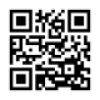Tel:+86 135 6203 9168
E-mail:zivibearing@foxmail.com
WhatsApp: +86 13562039168
Add: Yandian Industry Park,
Liaocheng City, Shandong
Http://www.zivibearing.com

|
The basic mode of tapered roller bearing failureTapered roller bearings developed on the basis of bearings, its working principle is to roll friction instead of sliding friction, generally by two rings, a group of rolling body and a cage composed of a very strong generality, standardization, a high degree of series of mechanical foundation parts. As a variety of machinery has different working conditions, the bearing in the load capacity, structure and use of performance and other aspects have put forward a variety of different requirements. For this reason, bearings need to have a variety of structures. However, the most basic structure is composed of inner ring, outer ring, rolling body and cage. 1. Contact fatigue (fatigue wear) failure Contact fatigue failure is one of the most common failure modes of all types of tapered roller bearings, and is a failure of the bearing surface caused by the repeated action of cyclic contact stress. The contact fatigue spalling of the bearing part surface is a fatigue crack from the sprouting, expansion to cracking process. The initial contact fatigue crack first from the contact surface below the maximum orthogonal tangential stress, and then expand to the surface to form a pockmarked spalling or small flake spalling, the former is known as pitting or pockmarked spalling; the latter is known as shallow spalling. If the initial crack is produced in the junction area between the hardened layer and the core, resulting in early spalling of the hardened layer, it is called hardened layer spalling. 2. Adhesion and abrasive wear loss effect It is one of the most common failure modes of various bearing surfaces. Relative sliding friction between bearing parts leads to the continuous loss of its surface metal called sliding friction. Continuous wear will make parts size and shape changes, tapered roller bearing with clearance increases, the work surface shape bad, thus losing rotational accuracy, so that the bearing can not work properly. Sliding wear form can be divided into abrasive wear, adhesive wear, corrosion wear, micro-motion wear, etc., which is most common for abrasive wear and adhesive wear. Tapered roller bearing parts between the friction surface by foreign hard particles or metal grinding caused by the friction surface wear phenomenon belongs to the abrasive wear. For the bearing, the inner ring usually with the shaft tight fit, and with the shaft together with the operation, the outer ring usually with the bearing seat or machinery shell hole into the transition fit, play a supporting role. However, in some occasions, there are also outer ring running, inner ring fixed support role or inner ring, outer ring are running at the same time. For the bearing, with the shaft tight fit and together with the movement of the said shaft circle, with the bearing seat or mechanical shell hole into the transition fit and play a supporting role said seat circle. Rolling body (steel ball, roller or needle) in the bearing usually with the help of keep frame uniformly arranged between the two rings for rolling movement, its shape, size and number directly affect the tapered roller bearing load capacity and use performance. In addition to the rolling body can be evenly divided apart, but also to guide the rolling body rotation and improve the bearing internal lubrication performance and other roles.
|
Yandian Industry Park, Liaocheng City,
Shandong
zivibearing@foxmail.com
+86 135 6203 9168

Mobile station